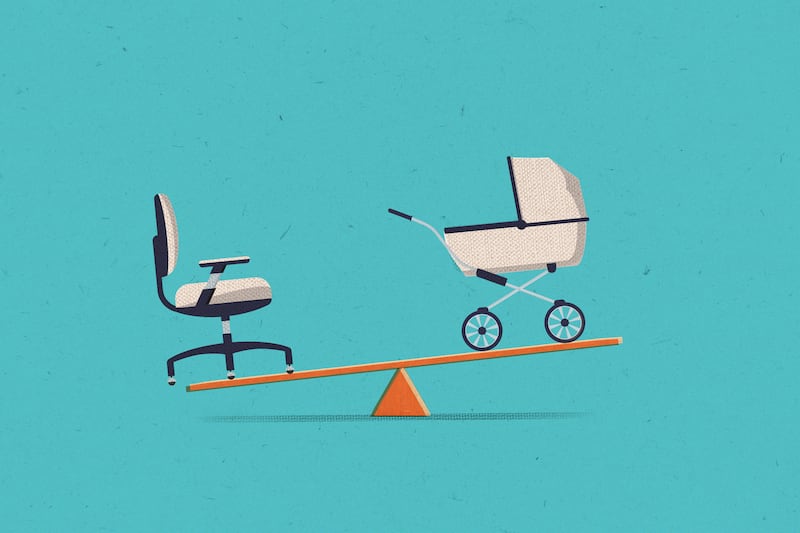Debates about child care policy frequently feature two sides talking past each other.
On the left, there can be a sense that child care is more about the economy than families, as when Joe Biden’s Commerce secretary, Gina Raimondo, asserted that “Anyone who thinks child care is social policy is deeply misguided and doesn’t know how to run a business.”
On the right, there can be disdain for the very idea of placing young children in the care of people outside the home, as with JD Vance tweeting in 2021, “‘Universal day care’ is class war against normal people.”
What both sides commonly miss is that a strong child care system does not stand opposed to the family, but in fact cultivates healthy soil in which family values can grow and thrive.
Good child care offers families both protective and promotive features, features which are all the more important as American parents face declining mental health, increased isolation and a host of challenges that come with raising children in the 2020s. Abundant, affordable care options can be the difference between a badly stressed-out parent and one capable of being fully present with their children and spouse.
Researchers Molly Dickens and Lucy Hutner have noted that “the task of finding care can also increase parents’ mental labor load, which can erode psychological health, particularly for mothers.” In one 2024 survey, 70% of mothers agreed that managing child care decisions, such as securing a care slot, was “overwhelming.”
The quality of available offerings matters, too: studies have found that parental stress spikes when they are dissatisfied with their child care. Unsurprisingly, the counterfactual holds true as well. As one Australian study concluded, “an increase in the availability of center-based childcare is associated with a decrease in perceived difficulty in finding ‘good quality’ childcare, as well as an increase in mothers’ satisfaction with the amount of free time available.”
Moreover, unaffordable child care options can often force families into unwanted and unsustainable circumstances. For instance, many couples only manage to make child care work by working ‘laddered’ schedules, where they arrange back-to-back shifts so one parent can always be at home.
A 2023 article from Seattle’s NPR affiliate explained one family’s laddered-schedule plight by saying, “Lara Allen and Rob Butler couldn’t afford the high cost of child care for their three kids, so they pay with other resources — sleep and time.”
Later, the article quotes a Washington state child care leader: “It just puts a real strain, because essentially what ends up happening is despite there being two adults in the home, you end up with the children in a way that feels very single parent. You don’t get the support of two adults in the home being with the children, but rather you’re tag teaming it and creating this handoff system.”
This is not a blue state vs. red state issue, nor is it an urban vs. rural issue. Even Utah families are experiencing widespread child care challenges.
Families with stay-at-home parents also struggle in a society that too often leaves families to fend for themselves or have their choices dictated by a callous marketplace. Setting aside the fact that nearly 70% of young children in America have all parents in the workforce, stay-at-home parents frequently report high levels of stress and isolation, and one-third live below the poverty line.
Many also need external child care, whether to attend doctor’s appointments or simply for a break. In a 2024 survey commissioned by the think tank I work for, Capita, nearly 40% of stay-at-home parents reported needing child care at least a few times a week, with another 22% needing it a few times a month. Yet despite this, only a quarter of respondents said they had access to the child care they needed all the time, with 40% saying they “rarely” or “almost never” had the care they need.
All of the above get in the way of parents being able to parent the way they want, of families having quality time and the languid space needed to pass down stories, traditions and values. Acute, chronic stress is an enemy of healthy families. And at worst, such stress can split families apart: One North Carolina mother, Lindsay K. Saunders, shared in a 2024 op-ed that the stress of trying to afford child care was a factor in her and her husband separating. “I wondered,” Saunders wrote, “if only we’d had more support, would we have made it?”
Anyone who cares about strong families should be fighting for a strong child care system: one that simultaneously supports high-quality secular and religious licensed programs, kin caregivers, and stay-at-home parents.
We would do well to stop arguing over which forms of care are worthy of public support and recognize that America, in all its brilliant diversity, is going to require a multi-pronged solution to a multi-pronged challenge. Without good child care, American families — and American family values — have a bleak future.
Elliot Haspel is a senior fellow at the family policy think tank Capita. This piece is adapted from “Raising a Nation: 10 Reasons Every American Has a Stake in Child Care For All,” which will be released Aug. 11 by Oxford University Press.

